
Senior Thesis: Charcoal
Charcoal is a semi-autobiographical journey about self-discovery, healthy friendships, and how to be a human being. This deeply personal graphic novel was my way of processing an emotionally abusive relationship that I was stuck in for two and a half long years - a sizable portion of my undergraduate career. The trauma I endured and the loneliness I felt during that time was intense, but so was the love and support that enveloped me when I was able to find my footing again.
In creating this graphic novel, I wanted to tell my story in a tender, endearing way, as well as remind myself that there are still wonderful people and things in this world that will treat me with kindness. The following case study walks through my creative process for the making of Charcoal, explaining my artistic choices and inspirations, as well as giving a glimpse into the dear friends who made this story possible in the first place.
DELIVERABLES:
- 5-7 fully illustrated B&W spreads
- Front cover, spine, and back cover
- 6 main character designs + monster design
- 3 promotional posters
- Sticker designs
- Self-authored story (click here to read!)
Art Direction: Sean Patrick McCabe
Medium: Procreate, Adobe Photoshop
Brainstorming
I’ve always been a fan of post-apocalyptic worlds, so when it came time to writing my story, I felt that a barren, monster-ridden wasteland would be the best environment in which to set the scene. The metaphor of surviving the apocalypse felt like the perfect fit for translating my own experiences into fiction, in a setting so riddled with desperation and a need to stay alive during an extremely dire situation. I began sifting through existing apocalyptic media, pulling inspiration specifically from outfit design and background concept art. I also drew heavy inspiration from modern fashion trends (i.e. techwear), and TV shows like The Last of Us, Daybreak, and Stranger Things.
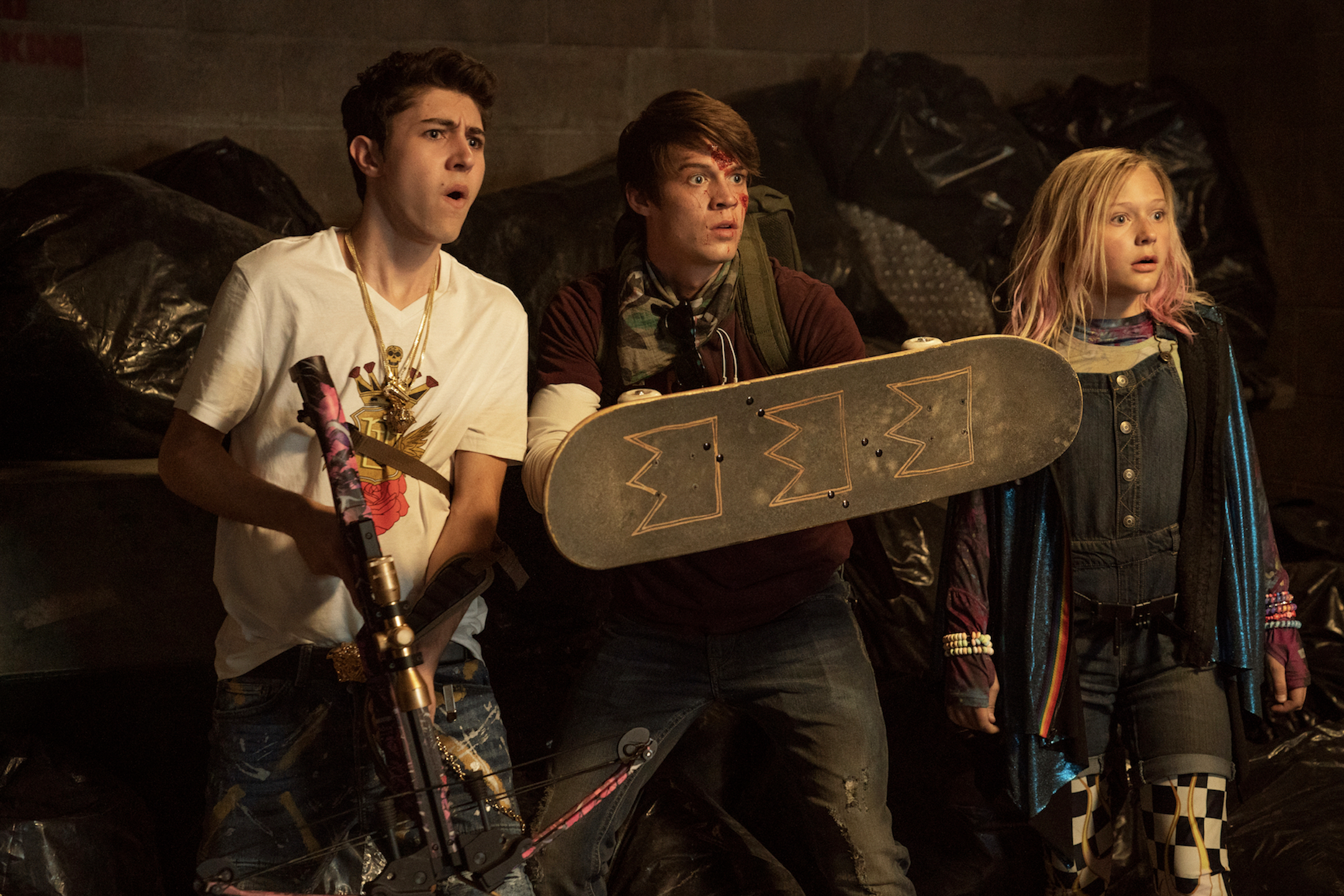
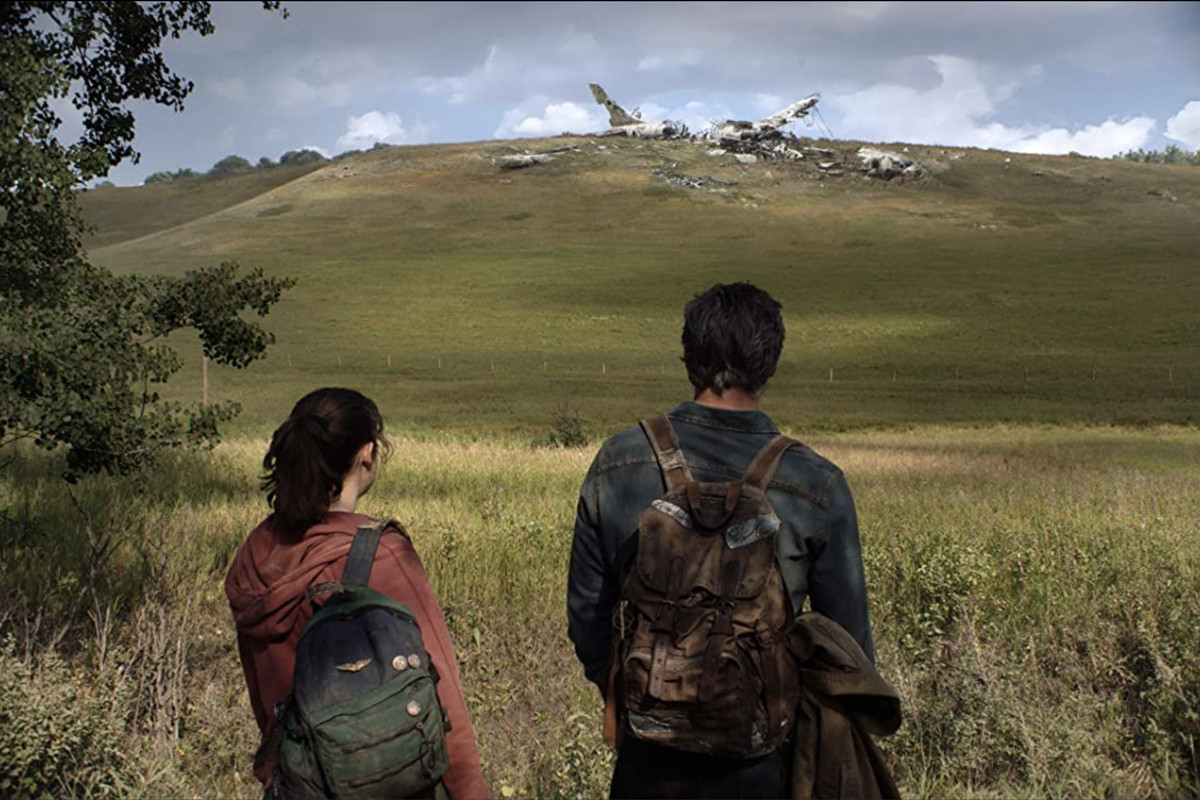




In terms of artistic stylization, I was primarily inspired by graphic novelist Tillie Walden. Her beautiful, detailed line work paired with engaging compositions and hand-drawn type stood out to me, and I emulated these qualities in my own work. More importantly, Walden does such a unique job of portraying human relationships in a thoughtful, endearing way, which heavily influenced the ways I drew my characters.

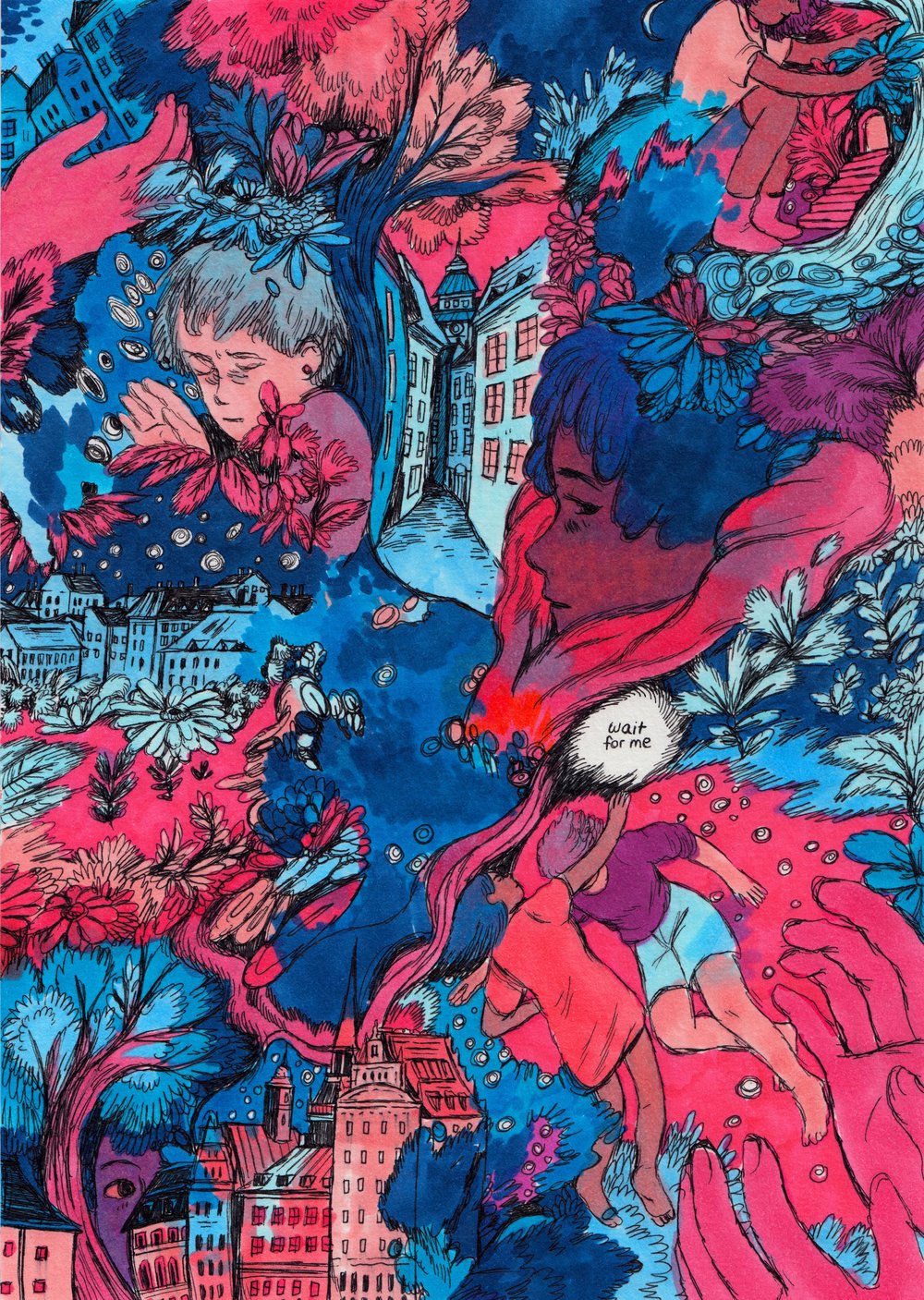

Character Design
The first thing I did after getting my story written was figure out what everyone should look like. As this is a semi-autobiography, I created these characters based off of myself and five close friends who had the most impact on me during my time of healing. I worked closely with each friend individually to get their input on their outfit, accessories, and unique role in the story. It was incredibly important to me to have my loved ones involved in the development of this graphic novel, as I wanted each of them to be represented accurately and respectfully. The final result was a series of six character sheets that clearly defined everyone’s personas, acting as a visual guide for me as I continued to work on this project. As a fun addition, I created one big character sheet of all of us together in full color.





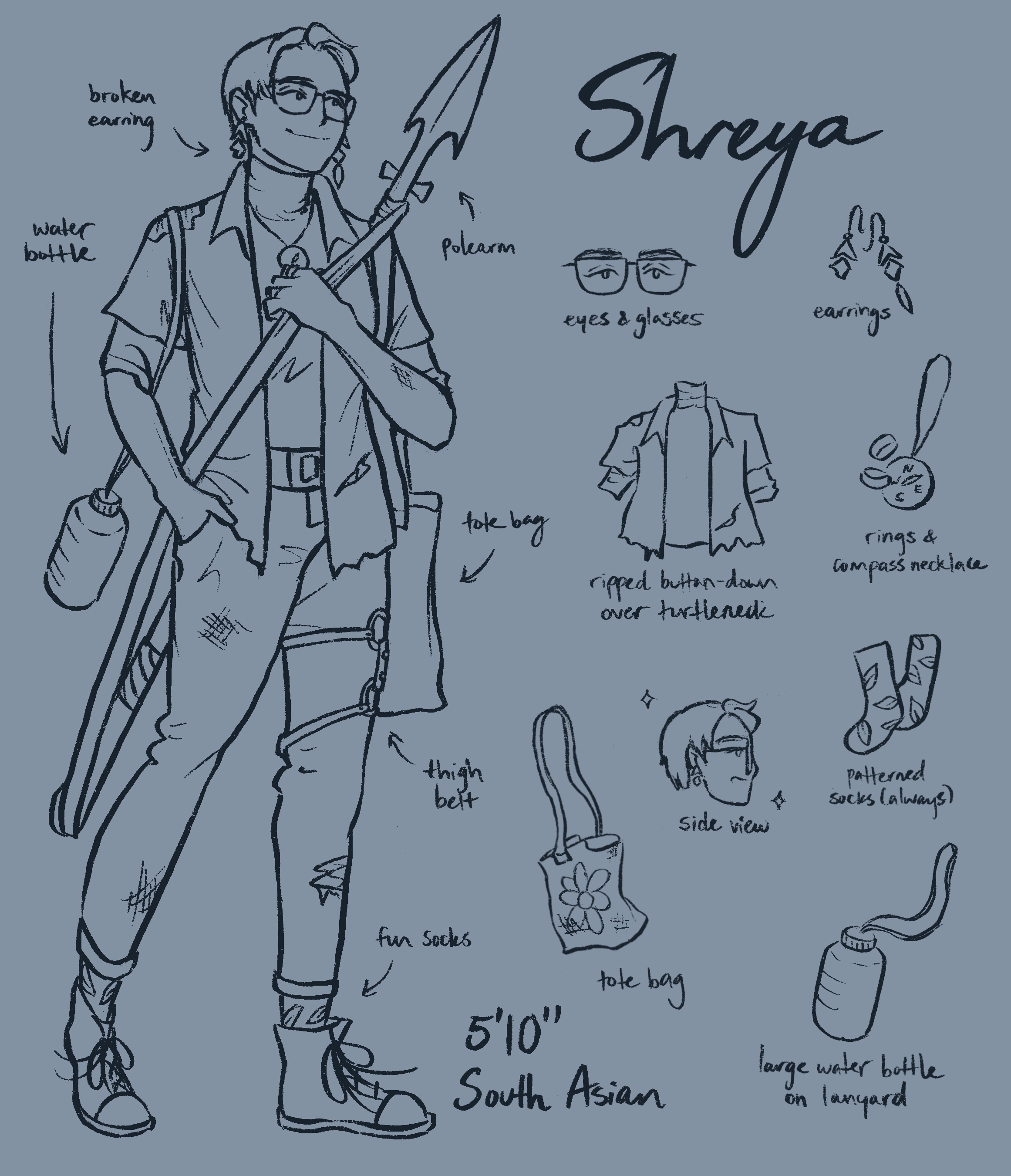
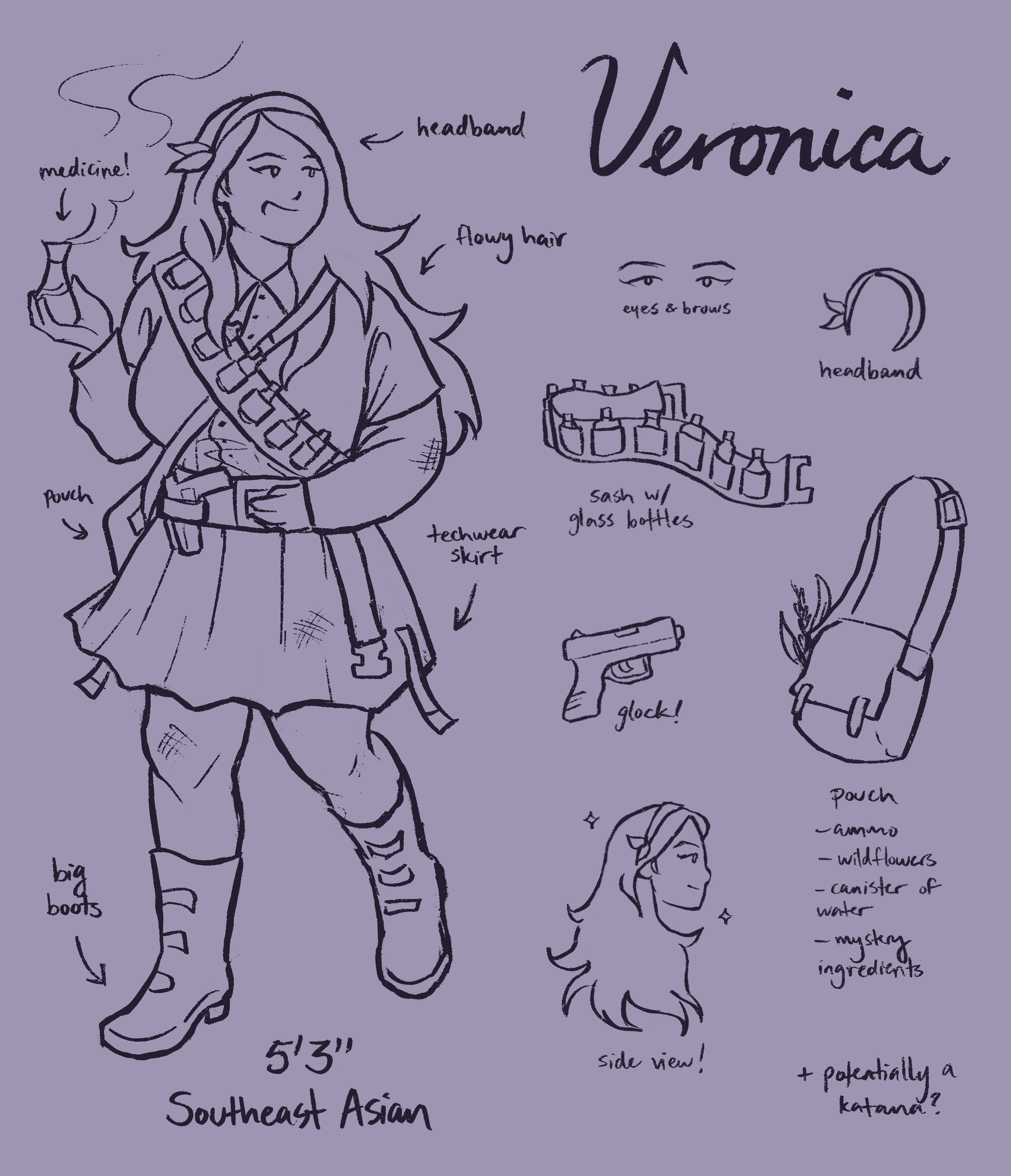

Monster Design
Of course, every post-apocalyptic story needs a good monster. My monster represents not only the person who hurt me, but also the feelings of sadness, anxiety, and self-doubt that lingered even after they left my life. I still struggle with these feelings every now and then, and I wanted to create a creature that felt omnipresent and that encompassed a lingering sense of doom. I found inspiration in monsters from various horror media, focusing on those that were simplistic, disfigured, and downright creepy.



In Charcoal, the Watchers are antagonistic terrors of the night. Former-humans-turned-monsters, they are black, warty creatures that absorb all light in their path. At night, they are practically invisible - all that is visible is a pair of huge glowing eyes. Having a humanoid monster was integral in representing the nuanced dynamic between myself and my real-life antagonist; at the end of the day I always knew they were still a human being, but because of how they treated me, it was difficult for me to see them that way.


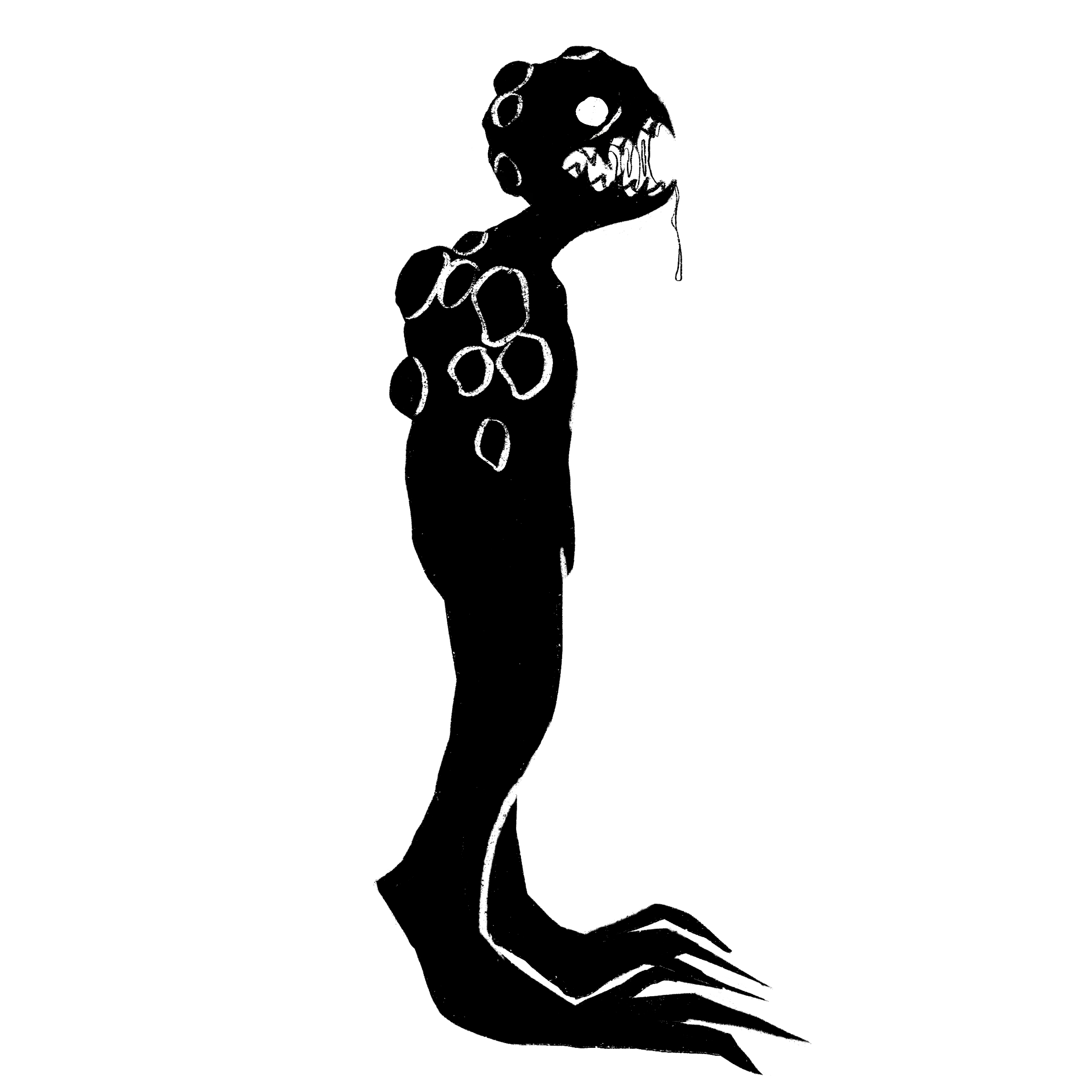
The Panels
My process for creating my graphic novel panels was pretty straightforward. Starting with a certain scene I chose from my story, I sketched out the general composition, followed by line art and B&W coloring. When picking scenes, I chose to bring to life the moments in my story that were the most impactful to me or would deliver the most dynamic composition. I have never created a graphic novel before, so many of the panels were products of experimentation, an exercise of creative play wherever I saw fit, while still aiming to deliver this apocalyptic story filled with hope.
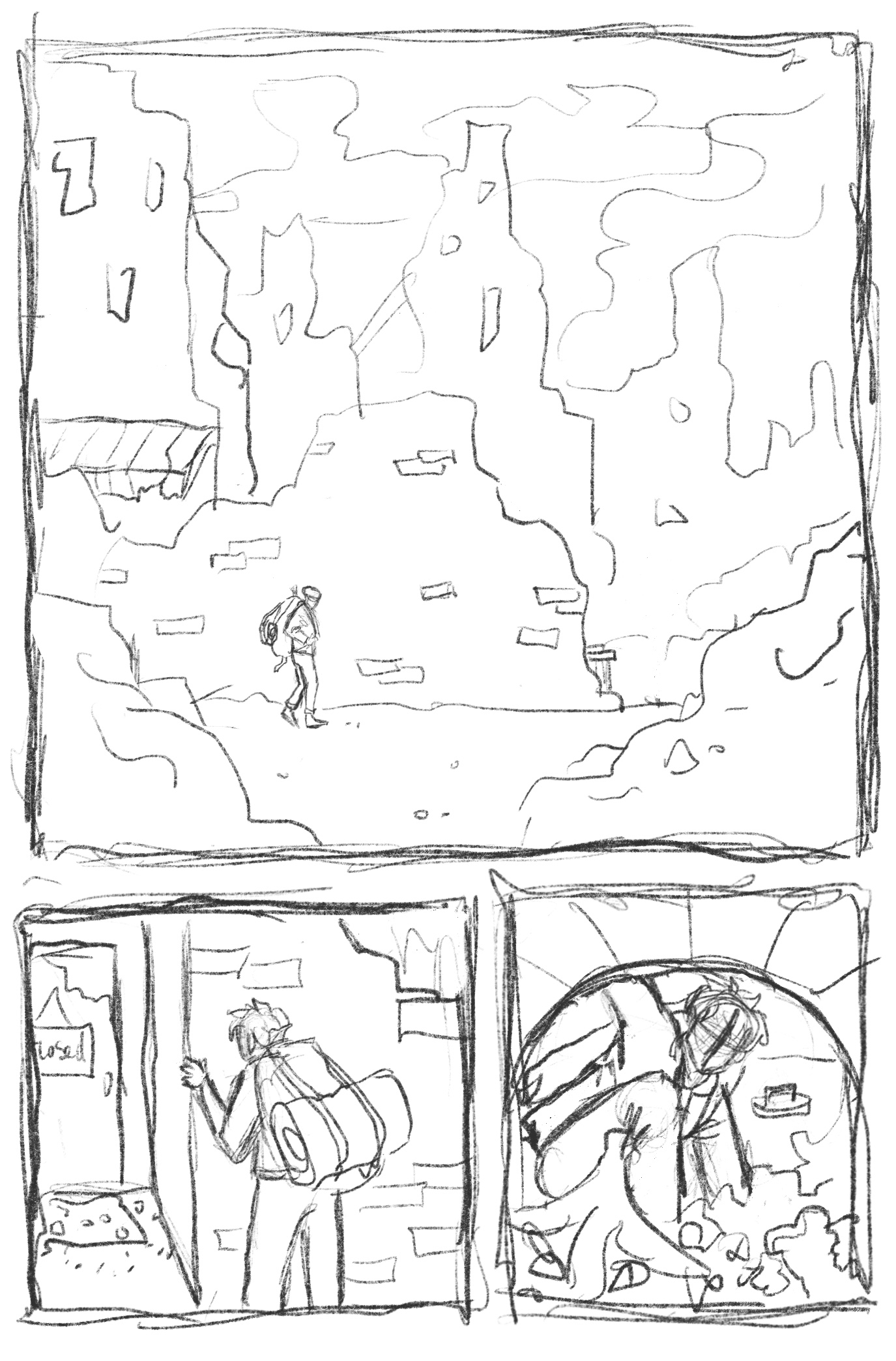



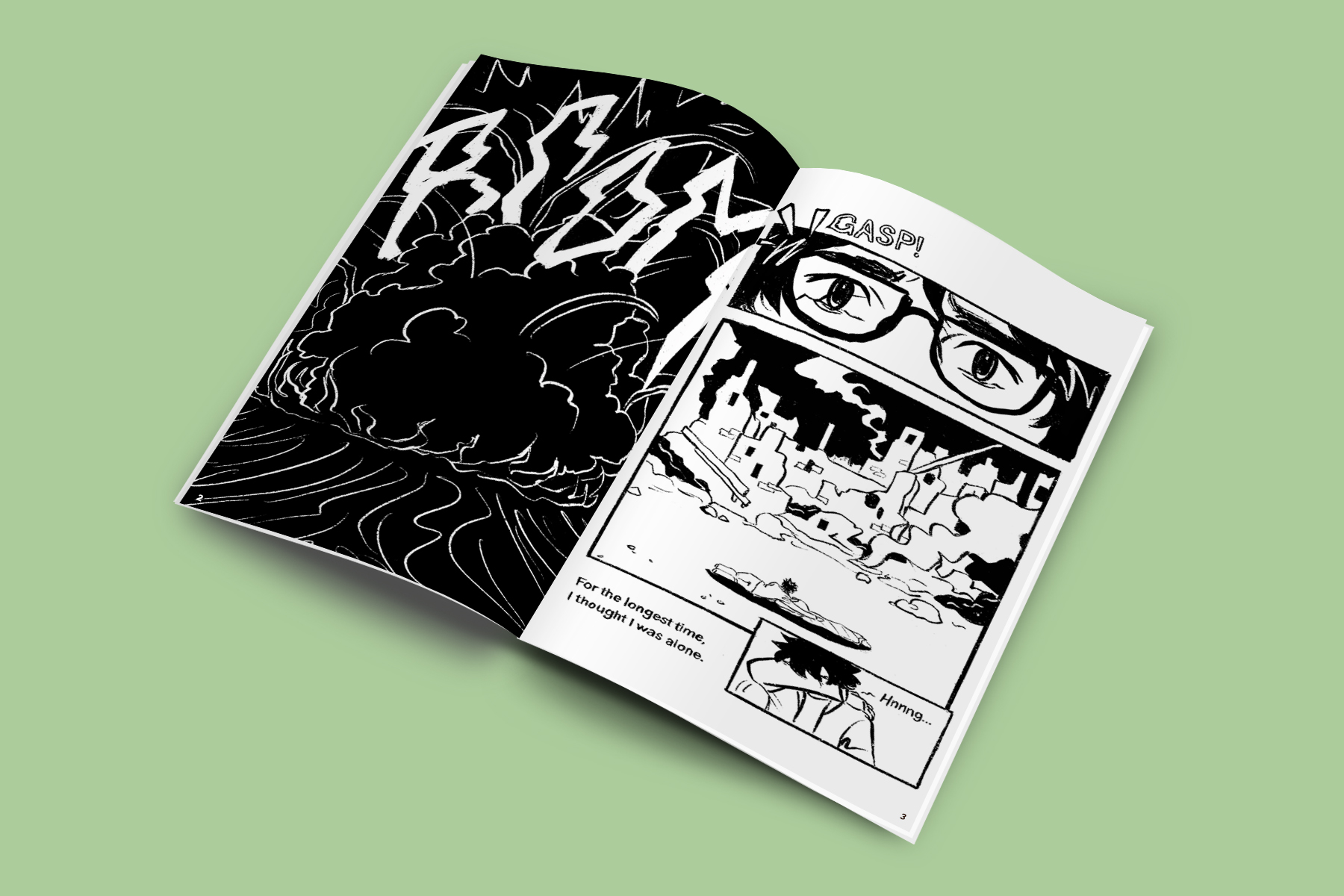
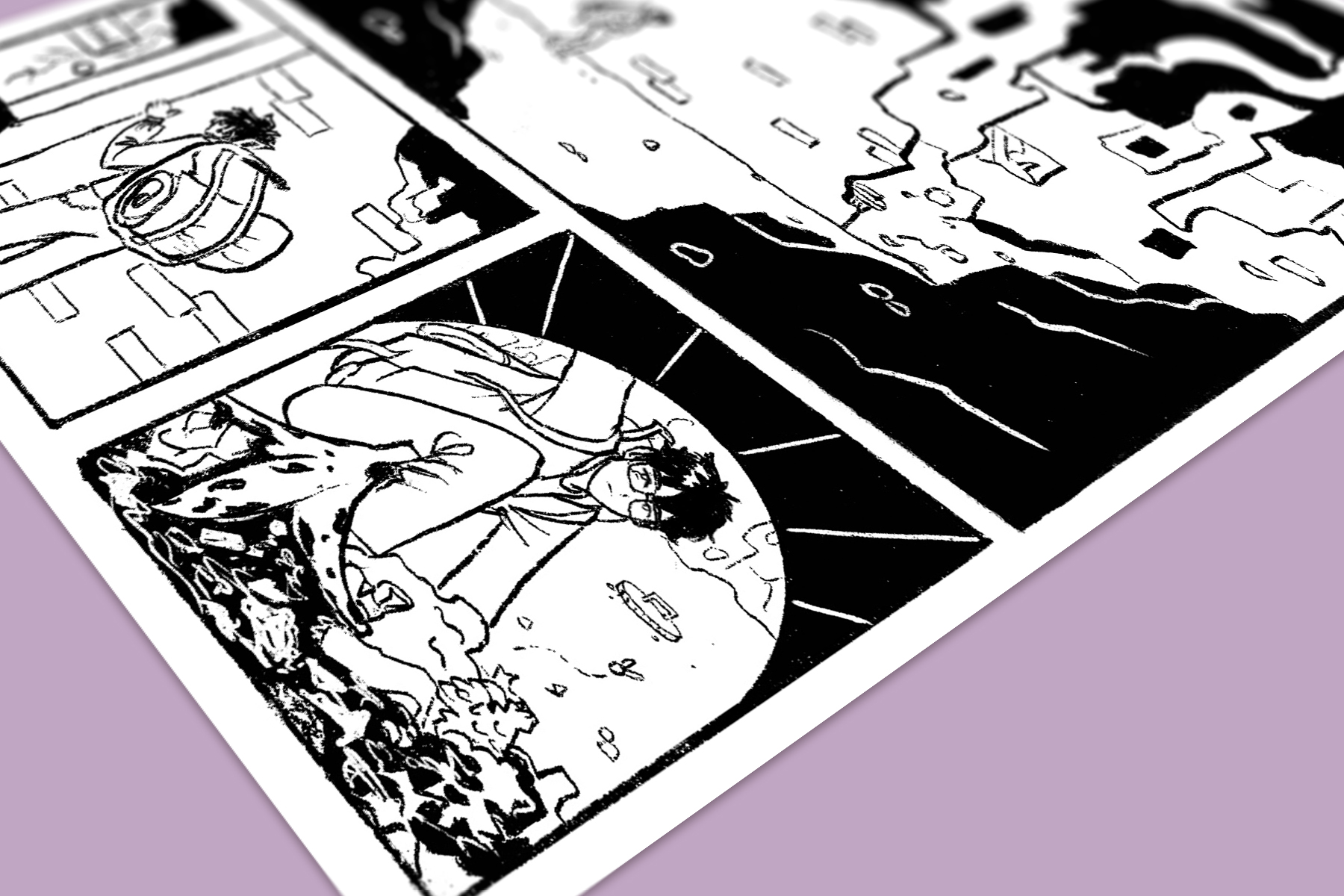

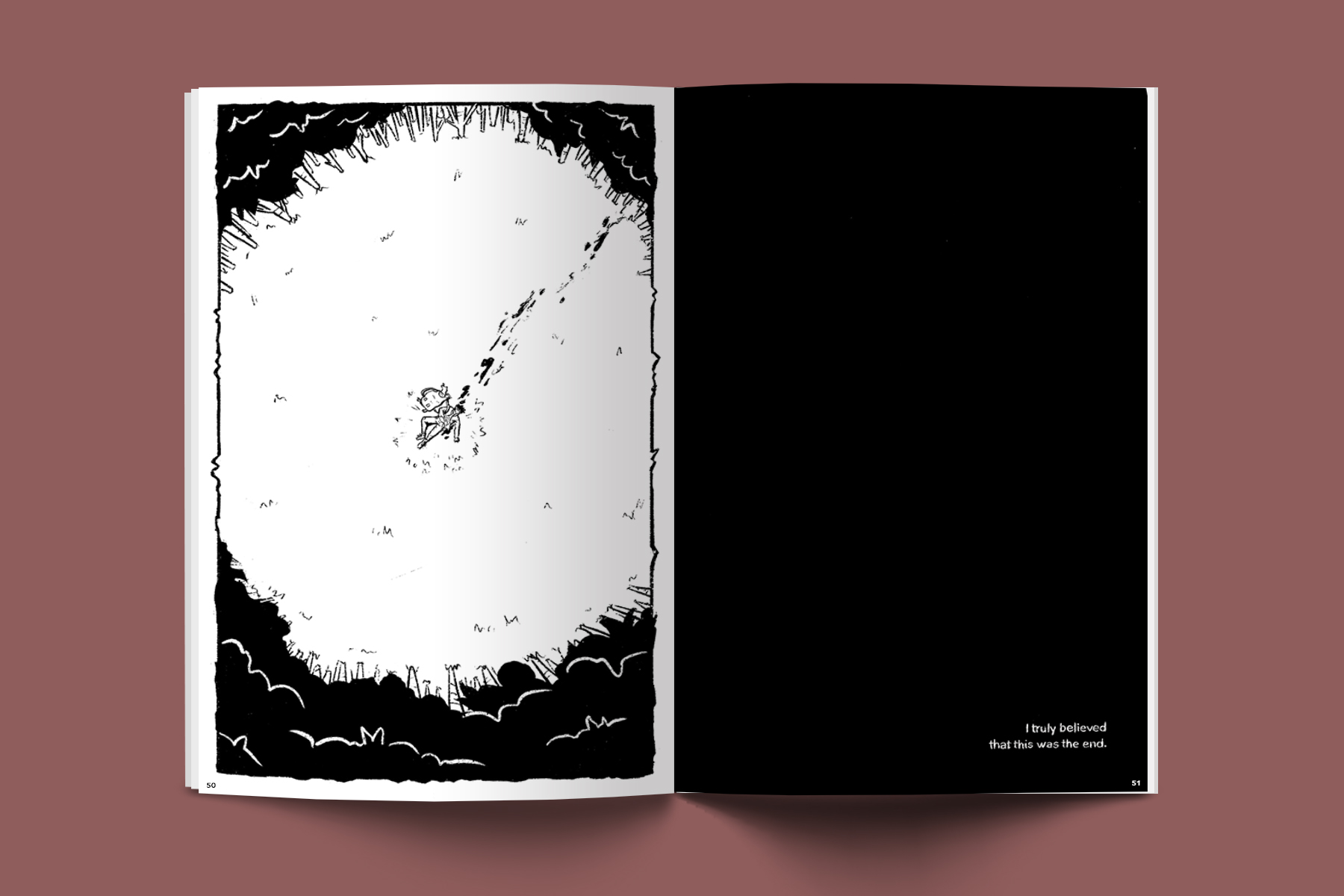


The Cover
Now that I had a solid idea of what the contents my story looked like stylistically, it was time to come up with a title and a cover. The name Charcoal comes from the dry art medium known for its smudgy and impermanent qualities. It can be terribly messy and you can never fully get rid of its marks, but the more you build upon it, the more rich and interesting the image it creates gets. I have found that life is a lot like charcoal: filled with unexpected chaos and changes among which you must inevitably find your place. This metaphor felt like the perfect overarching summary of my story.
The main cover art concept stems from Caspar David Friedrich’s painting “Wanderer Above the Sea of Fog” (1818). I found parallels in the meaning of the painting and my own life, as a lone individual traversing the vastness of the world in order to find themselves again. The loneliness yet sheer power that the main subject holds, posing defiantly on the proverbial edge of the Earth, felt akin to the state in which my protagonist starts their story.
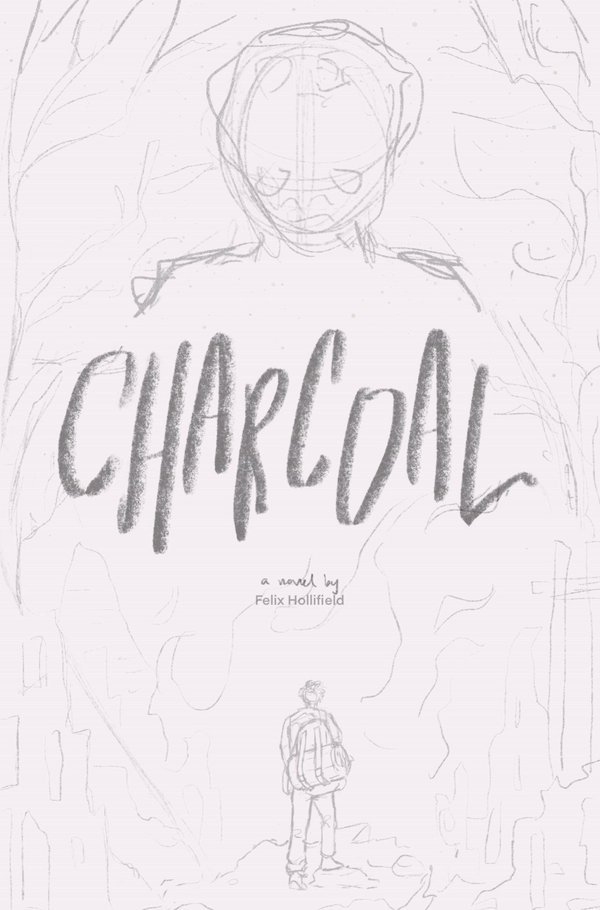




Collateral: Posters & Stickers
As a part of my budding graphic novel’s brand, I designed a series of merchandise items that would further develop the universe of Charcoal. These items enhance the beauty of my characters’ humanity and relationships to one another in an innocent, slice-of-life fashion.
I created two character-centric posters, focusing on the special dynamics between the characters as they are in real life, as well as one object-centric poster, using only the characters’ accessories to capture their likenesses. These posters were completed in full color and full render in order to evoke unique moods in each, as well as allow them to stand alone as their own pieces of art.




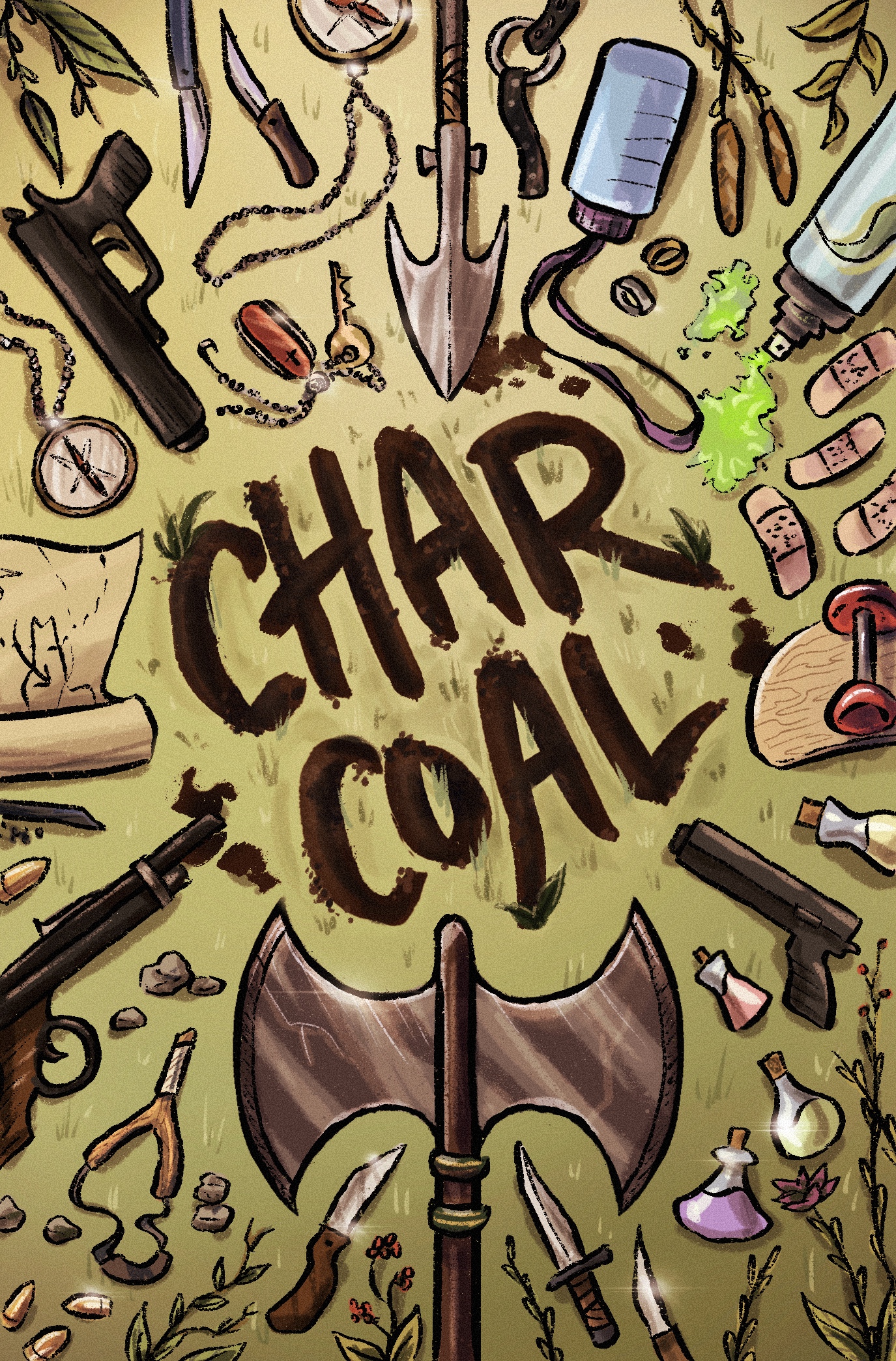

For stickers, I used each character’s head as its own design, along with a bonus design of my cat, who features in Charcoal as the pet of one of my friends. I also drew a little broken compass icon as a symbol for the lessons and friendship I have developed throughout the story. The logo type felt like such a defining mark on its own that I decided to make it its own sticker, too.
As an extra treat, I was even able to get a few of my sticker designs printed in real life, which I enthusiastically distributed to my friends, classmates, and professors.


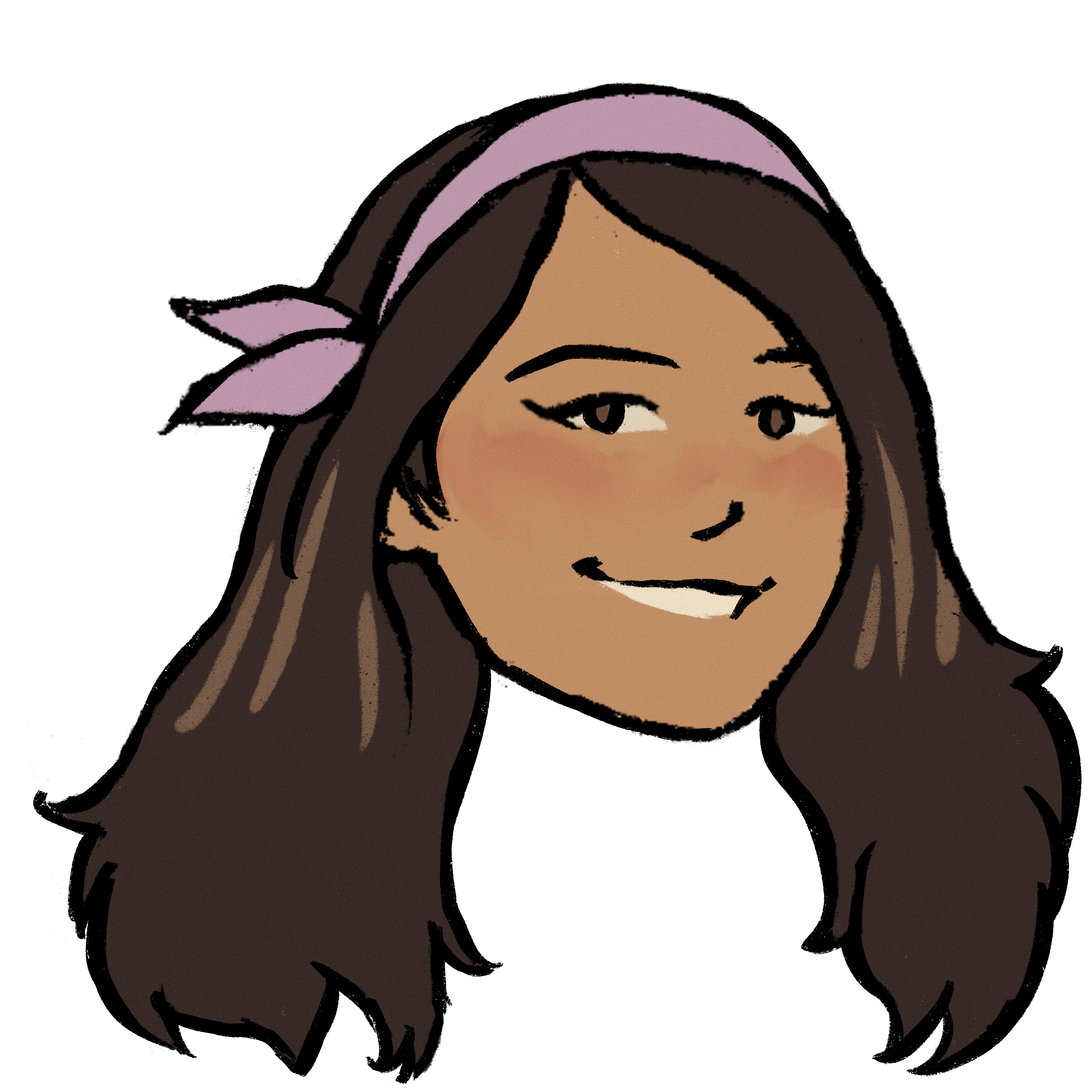
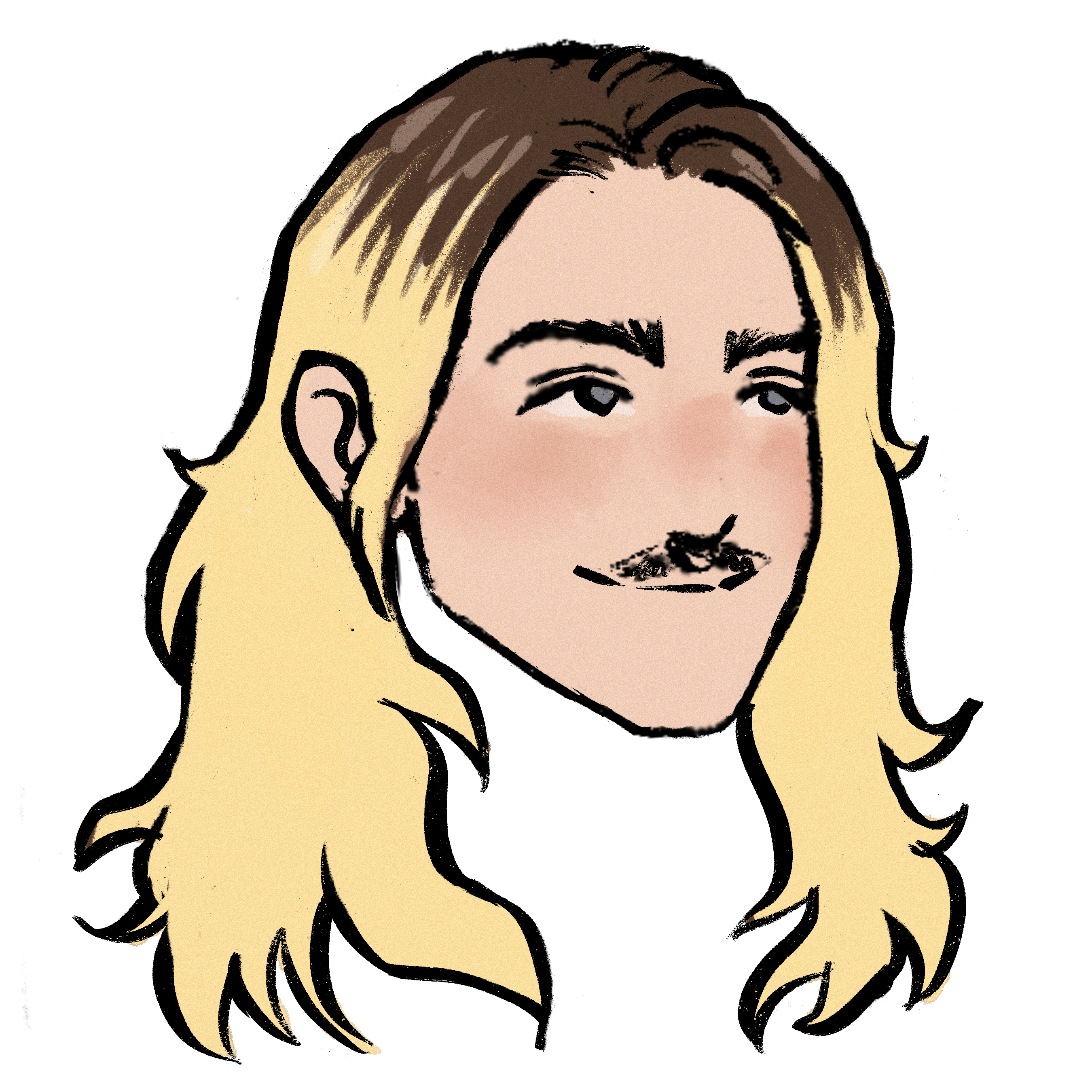

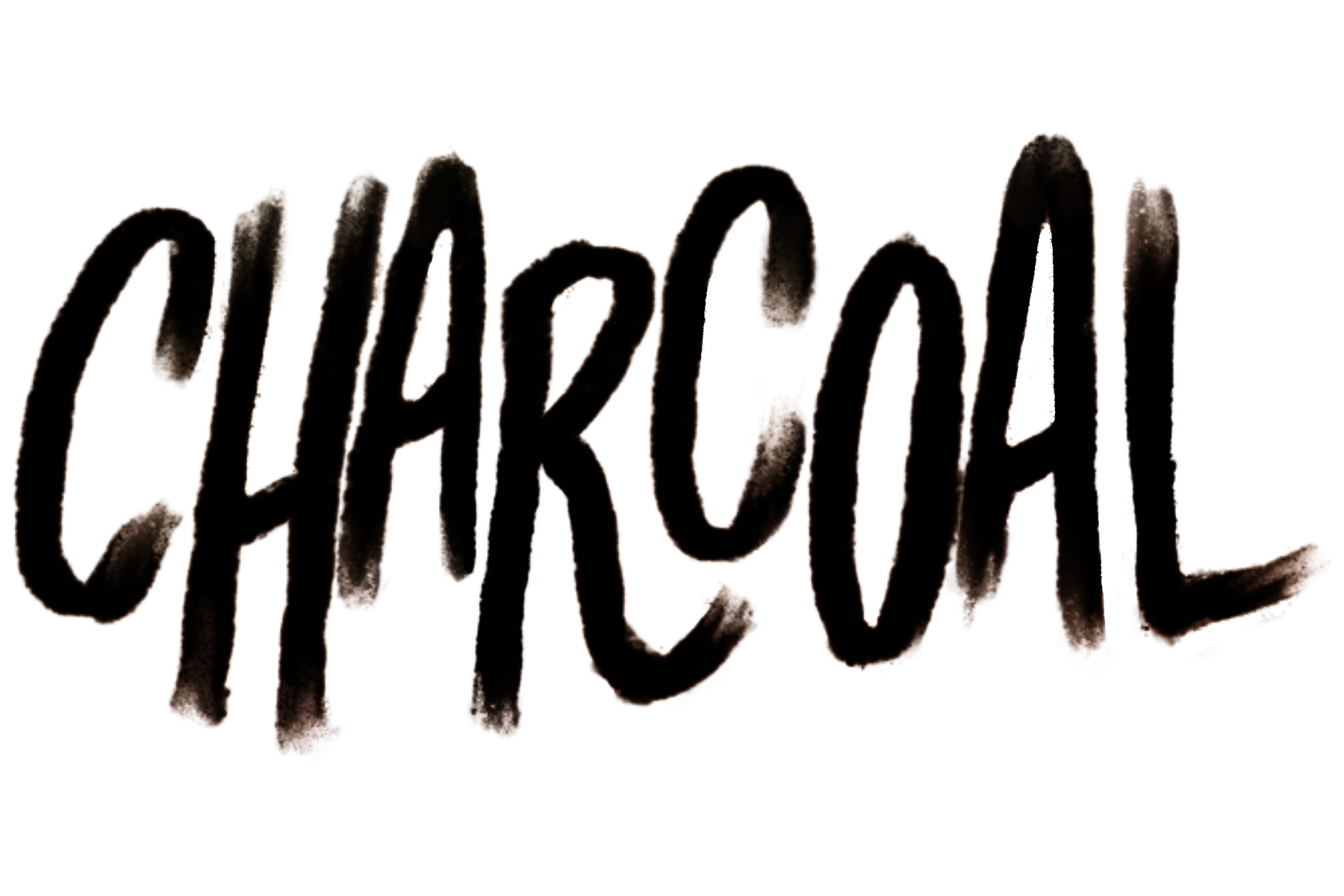
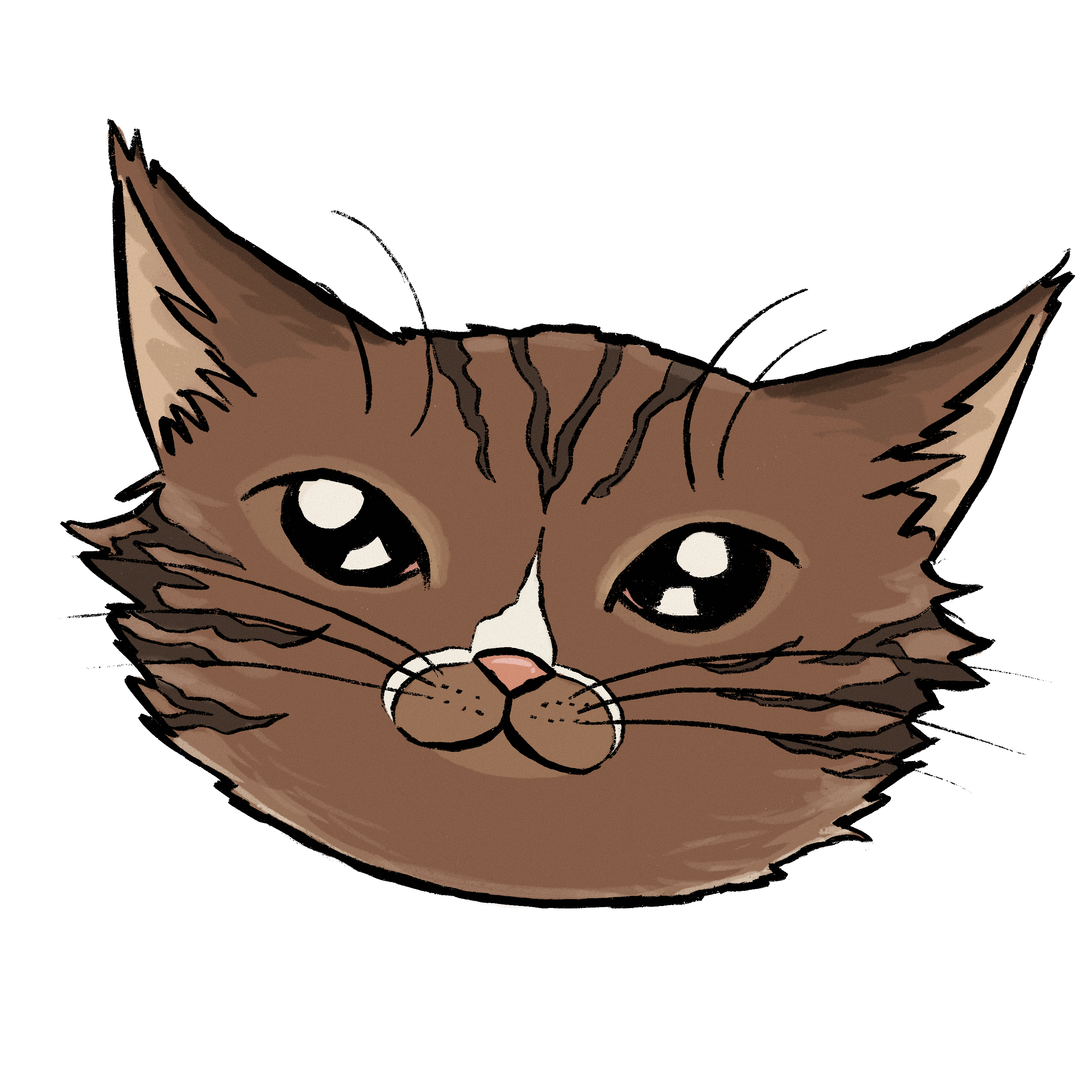


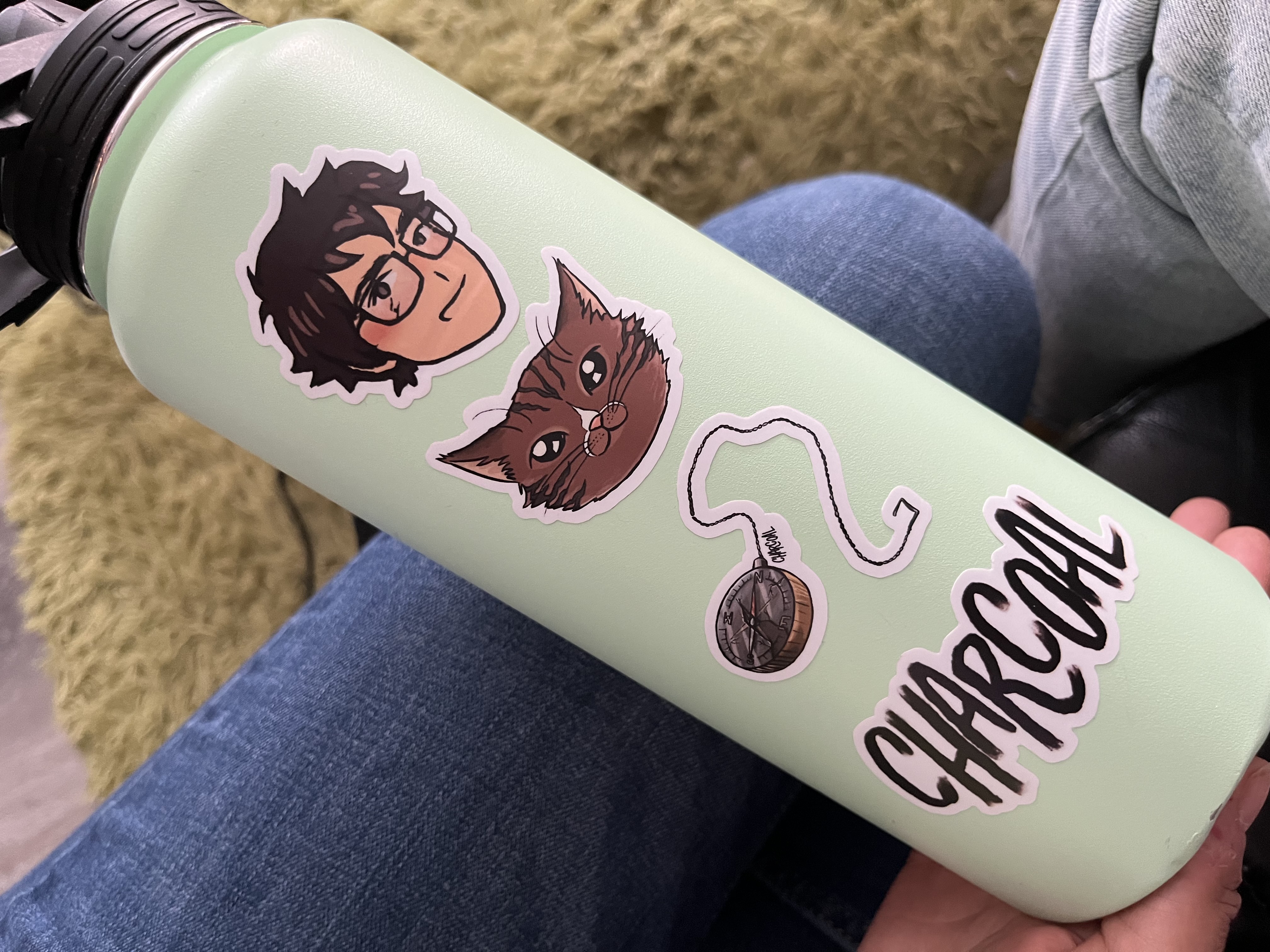
Conclusion
Working on this graphic novel has been a journey far out of my comfort zone. I have never completed something this large-scale or this personal before, but it has been the most fun project I have worked on in years. To create art so personal and vulnerable is scary, but I am glad I did it. Knowing this story’s impact on people before it has even become a fully-developed graphic novel has been so rewarding, and I feel comforted knowing that I am not alone in my sadness or anxiety.
This is just the beginning of an awesome fictional universe that is dear to my heart. If granted the time and opportunity, I would expand this graphic novel to become a real physical thing. Sharing this story with the world could potentially help someone who is struggling with their own sense of self; if I am able to change anyone’s life for the better through my characters, I would have done more than enough. :)
[P.S.: Want to see more of Charcoal? You can immerse yourself through the written version of my story here!]
